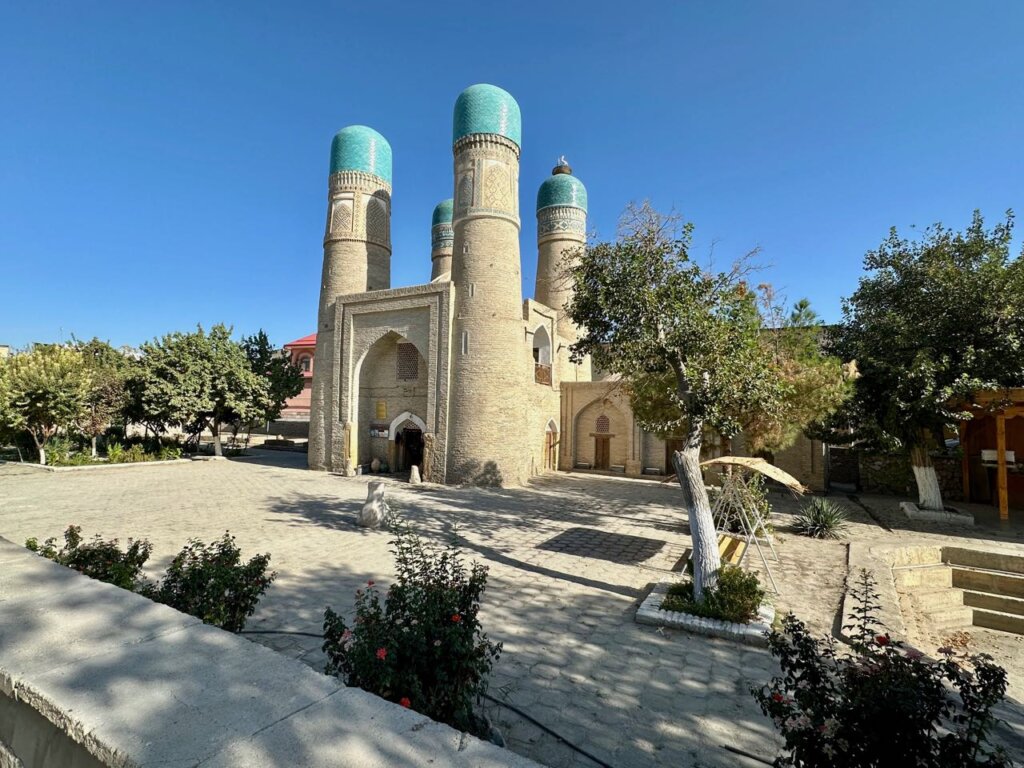Day 27. Friday, August 25. Rest day – Bukhara.
Bukhara is Uzbekistan’s seventh largest city and one of its famous, ancient cities on the Silk Roads. Yet, today the mother tongue of a majority of its 280,000 people is still Tajik, a dialect of Persian.
Such is life for people today across central Asia. The rise and fall of empires, religions and cultures – from east, west and north – have left their indelible marks across the continent over the past three millennia; and will continue to influence their futures.
Bukhara is a gem of an example. Its city centre is the most complete example of a medieval city in Central Asia, with an urban design and fabric that has remained largely intact. Hence, UNESCO lists it as a World Heritage Site.
Today, I had the privilege of exploring a little of it, given this is a rest day from riding. I’ll offer two examples of this heritage, built a millennium apart, reflecting a wise ruler and a foolish one.
The tomb of Ismail Samanai, built in the 10th century, is considered today the best surviving building of its era in the Muslim world. Built entirely of clay bricks, with their decorative arrangement its only ornamentation, it honoured a ruler much loved by his people for his astute but selfless rule.
So much so, when Genghis Khan was invading the city in 1220 he was intent on obliterating all Persian influences. However, silt from floods had mostly buried the mausoleum. A human chain was formed to carry sand from dunes more than a kilometre away to complete the task and turn it into another sand dune.
After asking a few questions about where the monument had gone, Khan apparently was too preoccupied by greater matters to pursue the subject. The mausoleum survived and was eventually excavated by Russian archaeologists in the early 20th century.

The second building I’ll mention is Sitora-i Mokhi-Khosa, the summer palace of Said Alim Khan, the last Emir of Bukhara. His grandfather had built the first by that name, of which no trace remains. His grandson’s, completed in 1917, is a curious mix of Arabic and Russian influences because Said Alim Khan was a Russophile.
In the 1870s, Russia declared Bukhara to be in its sphere of influence but left Alim Khan’s father to rule it. His son went off to St Petersburg for three years to study government and modern military techniques. In 1896, having received formal confirmation as Crown Prince of Bukhara by the Russian government, he returned home.

In 1911, he succeeded his father. He was convinced Russia was Bukhara’s friend and its best protection against British expansion of its empire. Thus, Russia would leave him to run the Emirate, and indulge his love of many things Russian.
But in 1920, units of the Russian Army attacked the city…and the last Emir fled with some of his treasure to Kabul, Afghanistan, where he died in exile in 1944. Meanwhile, the rest of his treasured possessions ended up in the Hermitage Museum in St Petersburg.



And here are two more glorious sights in Bukhara…


0 Comments